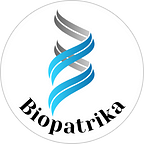Second Merck Compound Challenge 2020
Recently, I was announced as the cowinner of the Merck Compound Challenge 2020. The other winning team was a 10-member group from the Max Planck Institute, Germany. We share the euro 10000 winning prize.
The Merck Compound Challenge is an annual competition to propose a synthetic route towards a small molecule natural product. Within just two years of its inception, the Compound Challenge has positioned itself as a highly prestigious global event where teams assembled from among the foremost organic chemistry research groups in academia compete for the top prize.
The competition is open to anyone in the world and participation can be as a team or an individual. For the 132 teams participating this year, the small molecule structure — Melangenoterpenes A was released on 14 Feb and the teams had 96 hours to come up with a retrosynthesis with experimental details. To select the finalists, each team scored the proposal of 6–8 other teams in a double-blind pairing.
The top 10 teams with the highest scores were selected for the next round, where their routes were executed in the lab by a CRO. This is where the experimental protocols described in the initial submission mattered. The synthesis was done in a single attempt by following these protocols without any optimization. The route that went furthest towards the target was to be declared as the winner (and recipient of the 10000 euro prize). Amazingly, both the winning teams had a nearly identical route which included a Diels-Alder reaction as the key disconnect. The strategy allowed rapid access to the main spirocyclic core of the target within 5 steps, in an enantioselective manner.
As an organic chemist, this is something I will forever cherish! My main motivation to participate was to see how my proposal would compare with the best in the world. As an individual participant, the 96-hour timeframe is very constraining and having more members helps to quickly process ideas in parallel. One has to think about multiple routes and then critically analyze the weaknesses of each one. The winning route that I came up with was formulated in the last 36 hours of my time, including the detailed write-up — the challenge was an exhilarating experience mentally and physically.
There was no special preparation. Such competitions are a test of the long-term knowledge and expertise one has gained over their career. I made sure that I had on hand key textbooks and model sets for quick reference. However good the route is on paper, it is difficult to guess how it will perform in the lab, especially without optimizations. I am lucky the route was ultimately successful.
I have been fortunate to have been mentored by extraordinary scientists right from my undergraduate days in IISER Pune to PhD at UIUC and now postdoc at Caltech. I dedicate this win to all those mentors. During my PhD in Prof. Denmark’s group, we had a similar event called “ Molecule of the Month “ in October, when the research group was divided into three teams, given the structure of a recently reported complex natural product and challenged to come up with a retrosynthetic route to the target molecule and present their solutions. This was a critical aspect of organic chemistry training and provided a rigorous exercise in identifying the constituents of a good synthetic plan. Every year, I used to be very excited about this event and the recurring experience undoubtedly proved invaluable in coming up with a competent proposal in the Merck Challenge.
Photos taken from Merck website.
Article written by Dr. Soumitra V. Athavale.
Email: athavale@caltech.edu
Dr. Soumitra V. Athavale introduction and research interests
Born and raised in Pune, India, I completed my B.S.-M.S. in Chemistry and Biology from the Indian Institute of Science Education and Research (IISER) Pune. During this time, I worked with Prof. Harinath Chakrapani and Prof. Sanjeev Galande to get my initial training in organic chemistry and molecular biology. In Fall 2014, I joined Prof. Scott Denmark’s group at the University of Illinois, Urbana-Champaign. My PhD research focused on organic synthesis and elucidation of mechanistic pathways in asymmetric autocatalytic reactions, especially the Soai reaction. Since November 2019, I am working as a postdoctoral scholar in Prof. Frances Arnold’s lab at Caltech, with a focus on pushing the boundaries of synthetic nitrene chemistry with hemeproteins. I am broadly interested in asymmetric catalysis, biocatalysis and molecular evolution, especially in complex systems.
Originally published at http://biopatrika.com on December 21, 2020.
